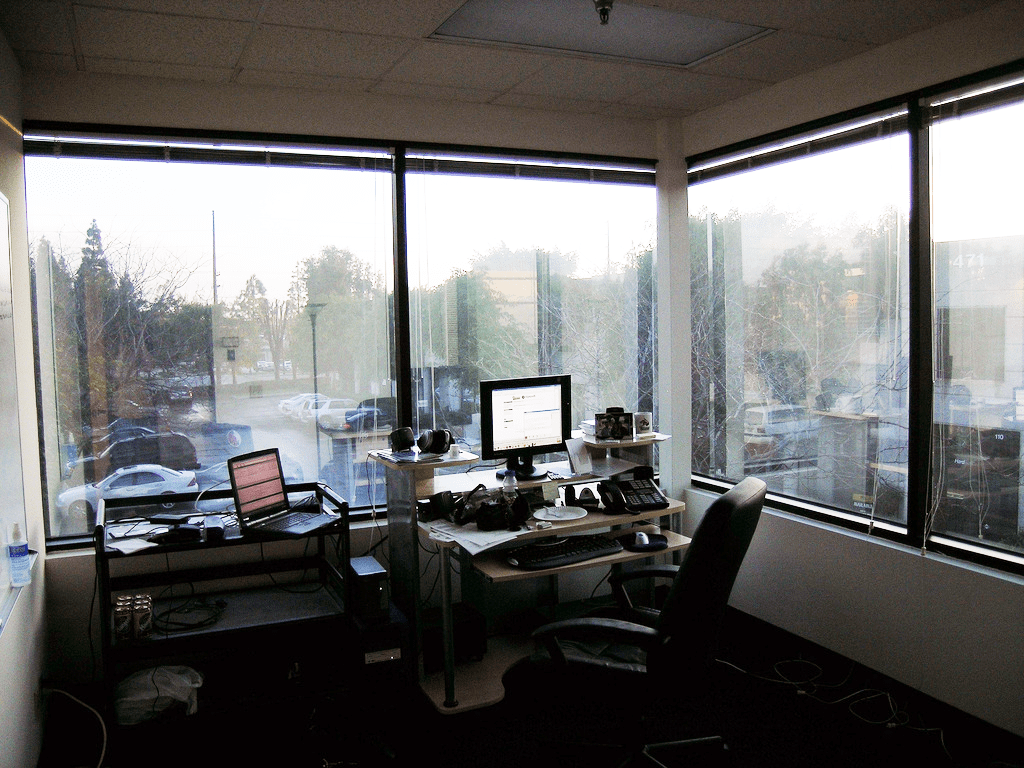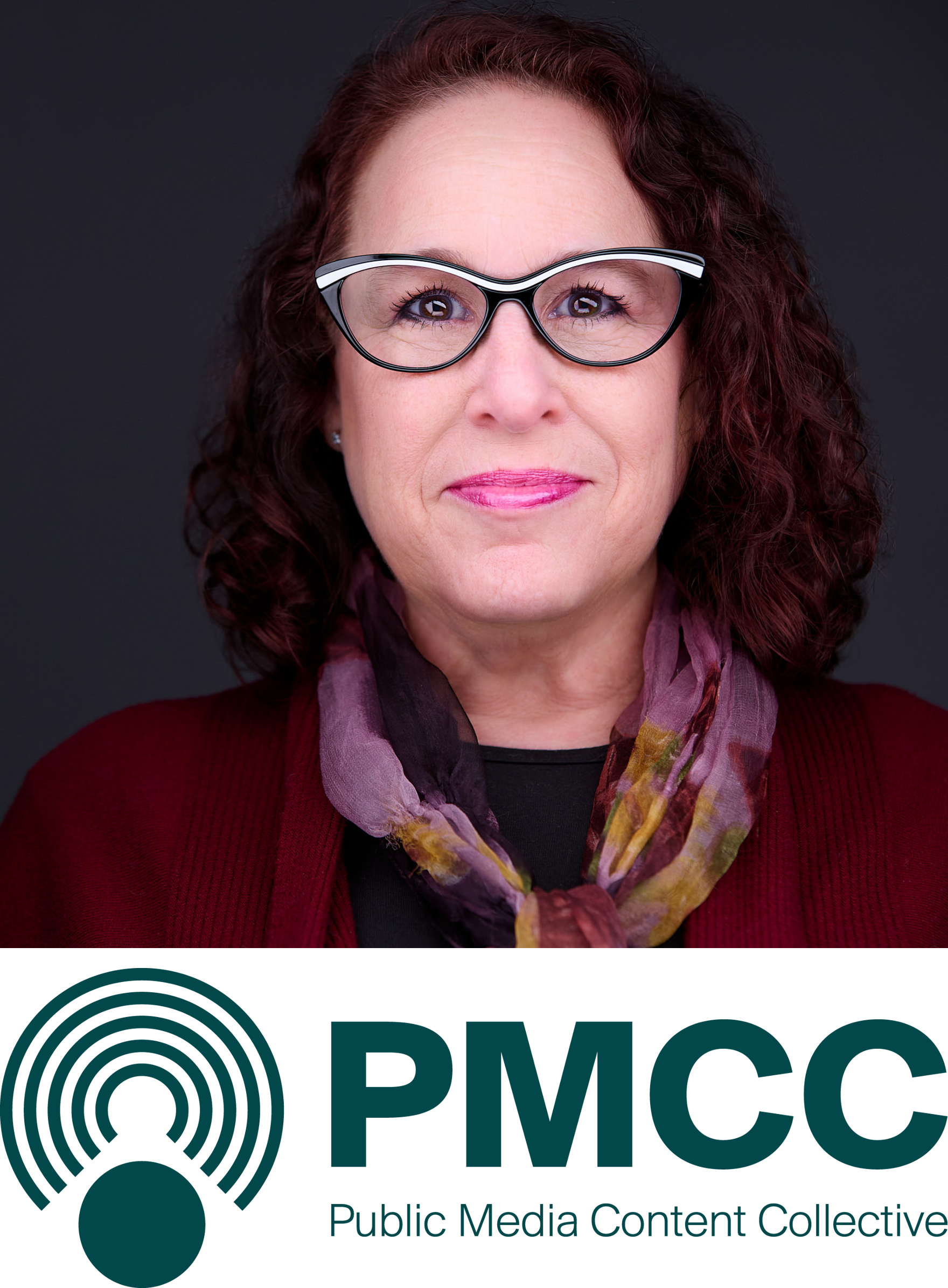
It has been an interesting week here at JacoBLOG world headquarters. Our Monday and Tuesday posts turned out to be a two-parter, breaking down some of the systemic problems keeping public radio stations on their heels in what has become a challenging – and in some cases, tragic – year for many legacy leaders, along with their employees, many of whom lost their jobs this year.
As both parts of “Is Public Radio A Victim Of Its Own Org Charts” were published, the comments came fast and furious. But no one was more motivated and energized than Abby Goldstein. Public radio vets know her well. Abby has programmed virtually every type of public radio station. She also served as GM so she knows what it’s like in that corner office.
more motivated and energized than Abby Goldstein. Public radio vets know her well. Abby has programmed virtually every type of public radio station. She also served as GM so she knows what it’s like in that corner office.
And for the last several years, she’s served as the President/Executive Director of the organization formerly known as the Public Radio Program Directors (PRPD) but now rebranded and redefined as PMCC – the Public Media Content Collective.
Abby always brings great industry perspective, lots of passion, and a no-B.S. POV. She talks to more PDs in a typical week than most people do in a year.
I was hoping to wrap up this conversation this week with someone else running point. I’m thankful Abby stepped up to provide a different look at a sadly common problem taking its toll on many public radio stations and their programmers system-wide.
As always, please add your perspective in the “comments” section below or hit up my socials. – FJ
Access Pt. 1 of our public radio posts here.
Access Pt. 2 of our public radio posts here.
Fred, your blog posts on public radio’s organizational chart problem generated a lot of responses from my corner of the industry. After reading the posts and engaging with a whole lot of public radio people, I have a few thoughts to share. While public radio’s problems are not unique to our sector or nonprofits in general, we have a set of challenges to overcome that are making things far more difficult for us. – Abby
What’s Going On In The Corner Office?
By Abby Goldstein
I think there are multilayered issues at the heart of what the JacoBLOG posts point out. Instead of asking the question “What does a PD at a public radio station actually get to do?” we should be asking “How has the senior leadership of the station defined the role of the PD?” Many of the problems begin with a lack of clarity in the corner office.
The role of the CEO or GM is critical to the immediate and long-term success of a station or group. So, what do public radio CEOs and GMs actually get to do? It’s a great question because, just as the role of the PD differs from commercial to noncommercial radio, so does the role of the GM.
Vision
We rely on our senior most leaders to provide a compelling vision that moves the staff and the community to action. Passion for the mission of nonprofit organizations is a big reason why people gravitate to these jobs. They want to be a part of something they feel is important to themselves and their communities, and advance that mission for the greater good. People don’t typically work in the nonprofit sector to make a lot of money and retire at 55.
of nonprofit organizations is a big reason why people gravitate to these jobs. They want to be a part of something they feel is important to themselves and their communities, and advance that mission for the greater good. People don’t typically work in the nonprofit sector to make a lot of money and retire at 55.
A staff will get behind a leader who is able to communicate a compelling vision and help their teams understand how their daily work contributes to that vision. Without a visionary leader to show these mission-driven people where they are headed and why, they will lose their passion and find other jobs. It’s pretty simple, really. A loss of talent at an organization is an indication the leader hasn’t communicated a vision that their staff can get behind.
But in some cases, what comes out of the corner office is a mishmash of corporate jargon and a blurry picture of digital audiences who are somehow going to support the station to the same degree broadcast audiences do. There’s an “If you build it, they will come” mentality and the PDs are often left scratching their heads about what to create, for whom, and how to pay for it.
Sometimes, public radio stations don’t have a PD at all because the GM believes they can do that job and their own job at the same time. We have a few of those leaders in the corner office and I think it’s safe to say those stations aren’t exactly burning up the charts.
What would happen in your community if your organization didn’t exist? If your senior leaders can’t talk about a big, bold vision for your station that makes your community a better place to live for everyone, you may need someone different occupying the corner office.
The short list of things public radio PDs actually get to do is decided by the person at the top of the org chart, so programmers are doing exactly what their superiors expect of them. If they aren’t doing a good enough job, the expectations are too low.
Strategy
An organization’s long-term strategy is born in the corner office. One of the key elements of a senior leader’s job is creating a strategy that will lead the organization to stability and sustainability. A good strategy is informed by data and information, but in too many situations, it’s informed by personal opinions.
will lead the organization to stability and sustainability. A good strategy is informed by data and information, but in too many situations, it’s informed by personal opinions.
A strategy is a plan of action designed to achieve a major or overall aim, a detailed plan for achieving success. What is the aim? What does success look like? How will we know when we’ve achieved it? Those are questions that need to be answered before a strategy is designed. We need to know the destination before we can map the route. A senior leader’s job is to choose that destination and keep people focused on getting there.
No strategy will be successful without the tactical know-how to turn a plan into reality. Too often, a GM or CEO will have a plan, but they either don’t understand or are unable to communicate precisely how that plan will be achieved at the operational level. A good leader must be able to tell people HOW they will achieve that plan, not just WHY it’s important.
 A lack of strategic clarity rolls downhill quickly and results in what I call the creation of “Frankenjobs.” That’s a position description that has parts of several jobs rolled into one, much like how the Frankenstein monster had the body of one person and the brain of another. Here’s an example – a station wants to produce a podcast, but they don’t have the staff to take it on full-time. So, they grab the people who really want to make that podcast and subdivide their jobs, allowing for 15% of their time to be spent on that project.
A lack of strategic clarity rolls downhill quickly and results in what I call the creation of “Frankenjobs.” That’s a position description that has parts of several jobs rolled into one, much like how the Frankenstein monster had the body of one person and the brain of another. Here’s an example – a station wants to produce a podcast, but they don’t have the staff to take it on full-time. So, they grab the people who really want to make that podcast and subdivide their jobs, allowing for 15% of their time to be spent on that project.
And so what ends up happening is the podcast becomes successful, and those talented employees spend more like 50% of their time producing it, which means those other parts of their jobs are now not getting done at all. When someone gets burned out and leaves, the station now has to find someone else to fill that “Frankenjob,” which often includes skills and tasks a single person doesn’t normally possess. Strategy should lead to stability and “Frankenjobs” are the opposite of stable.
Resources
The “Frankenjob” is also a result of not having enough resources to sufficiently handle the jobs that need to get done. Perhaps the most important part of a CEO’s job is to ensure the resources are in place to achieve the goals they’ve set up for the organization. In nonprofit media, leaders are expected to fundraise and be actively engaged in resource development activities.
They meet with major donors, attend fundraising events, go on sales calls with important corporate clients, get involved with other local nonprofits, and motivate their boards to support the station. They are highly visible in the philanthropic community, and they sit on other local and national nonprofit boards.
nonprofits, and motivate their boards to support the station. They are highly visible in the philanthropic community, and they sit on other local and national nonprofit boards.
We are not in the broadcasting business anymore. We are in the relationship business. GMs and CEOs are the living embodiment of the relationships our stations want to have with the people and companies who support us.
We are seeing many nonprofit stations struggling right now against a major economic tidal wave that has gutted corporate support. Underwriting is down, membership is not keeping pace, and audiences are dwindling. Some organizations have reduced staff to “right-size” their stations for the moment we’re in, but some leaders are insisting their teams must do more with less. That’s an unsustainable position that will cause even more burnout and staff turnover.
Station leadership must get creative about finding new revenue sources and bringing more resources into their stations so they don’t find themselves in that no-win situation where they have to do more with less. If there are less resources to support the work, either more resources must be procured, or the leader must scale back their expectations of what the operation is able to do.

Any station is only as good as the people who bring it to life every day. The staff is led by someone whose job it is to give them the tools and support they need and inspire them to greatness. Public radio’s programming woes could be solved by visionary leaders who understand how strategy translates to tactics and who bring in the resources to turn their vision into reality.
So, what’s happening in the corner office at your shop?
- A 2020 Lesson?It Could All Be Gone In A Flash - April 24, 2025
- How AI Can Give Radio Personalities More…PERSONALITY - April 23, 2025
- Can Radio Afford To Miss The Short Videos Boat? - April 22, 2025





An excellent addition to a thought-provoking series! I truly appreciate Abby’s call for those of us in public radio’s leadership to look in the mirror. When I arrived in my current position almost a year ago, it was immediately clear that the PD didn’t have the same expectations I was accustomed to with PDs in my commercial broadcast experience, and Fred’s posts rang true. But Abby put that responsibility squarely back on me, and all of us who manage PDs in public radio. It is well-placed and a great call for us to up our game. The future of public broadcasting relies on it.
I must say that Abby’s experience and wisdom has brought clarity to the question. What she’s written is precisely what has happened at our station, one that used to be at the top of the success ladder. What’s going on in the corner office has now brought on a sense of bankruptcy, both in personnel, morale, and currency. We are left with a leader who has never even listened to the station, one who has brought in consultant after consultant, looking to others for a way forward, and ultimately blaming the employees when consultant advice never brought successful movement. We have numerous Frankenjobs and employees who’ve had an impossible-to-carry workload dumped on them because of layoffs, firings, departures, and too few employees overall. Yet there’s declaration of a ‘balanced budget.’ Of course! We no longer have the staff we need to do what the listeners expect.
What’s going on in the corner office is nothing but false pronouncements of success, and total ignorance of how to run a successful radio station.
Hello, Diane, and thank you for sharing your experience here. With respect to our colleagues in the corner office, the decisions that our GM’s and CEO’s are having to make in today’s media climate are beyond difficult. Its easy for those of us who aren’t in those trenches every day to give advice from our unique perches. These are harrowing times for everyone in media, not just nonprofit media. That said, its times like this when we need the sharpest leaders with deep experience, a bold vision rooted in service to the community and the ability to inspire others to support them. Leaders like this exist in public radio and they are having impact. I’m sorry that your experience is the opposite. I respect the hell out of you, Diane. Thanks for the comment.
Diane, I very much appreciate you lending your wisdom and perspective to this important conversation. Abby’s Frankenjobs observation is symptomatic of the problem. But I think it goes to the heart of a larger dilemma – public radio has lost clarity of mission, exacerbated by the media/news/tech explosion and the increased burden since Donald Trump entered the scene, soon followed by the pandemic. It’s a conflluence of challenging circumstances, and I fear most public radio stations don’t have the resources (human and financial) to figure it out, much less get it done.
Amen, Diane. And thanks, Abby. (Hope to meet you one of these days.) I know times have changed, but I’d caution everyone against relying on data alone. Too often, it gives GMs and CDs an excuse not to think creatively, try new things, or even listen to their stations. Audiences are dwindling, indeed, as Abby wrote, despite our having based programming decisions almost entirely on data.
Audiences are dwindling for a variety or reasons and looking at that data should be a sobering wake-up call to leaders. I am bullish on radio and believe that public radio stations, especially news/talk stations, currently have the ability to regain their strong positions in local markets. But its going to require thinking differently about what radio is and the role it plays in people’s lives. Its also going to require some risk-taking in the revenue space as “listener sensitive” revenue has to mean something different than it traditionally has. We also can’t apply standard public radio fundraising practices to digital platforms, assuming that 10% of all audiences we interact with will donate to the station. The relationships are very different across platforms. Its not just about data, its about understanding what audiences want and need from public radio….because the dwindling audience SHOULD tell us that audiences want and need something different today than they did just a few years ago.
Hey all: I wholeheartedly agree with the points made: a GM with a strong vision for content helps the PD focus their energies and gives them the authority to make decisions (without GM interference, I might add). The challenge stations face is to determine the appropriate amount of investment in content for broadcast or on-demand and, let’s face it, nobody has that crystal ball.
I’d like to add a perspective from a commercial PD friend of mine here in San Diego. He and I have exchanged notes and beers for years, and I’ve always been amazed at how little his stations have invested in digital. HD channel? Nope. Podcasts? Forget about it. Social media? Kinda. He is running a RADIO STATION, and nothing else. He is creating the best value he can by sustaining one of the best radio brands in town so that his sales and promotions teams can work their magic. Great music, engaging hosts, live events… Guess what? It’s working. Granted, their cume numbers are down like everyone else’s, but relative that decline his station is killing it in his targeted demos.
Public radio has a history of taking on too much. We throw our public service mission around like a net attempting to capture as many audiences as possible so as to fund our mission. We “do good” by serving multiple audiences because that’s just the way we are. (I’m not one to decry that world-view, by the way.) However, and getting back to Abby’s point, there comes a time to say “no”. All of this is to reiterate how important it is for the GM to have a vision and an ability communicate effectively where they want the bus headed.
Cheers
John
John, thanks for the perspective from the other side of the street. Sometimes, in fact, less IS more. Thanks for chiming in.